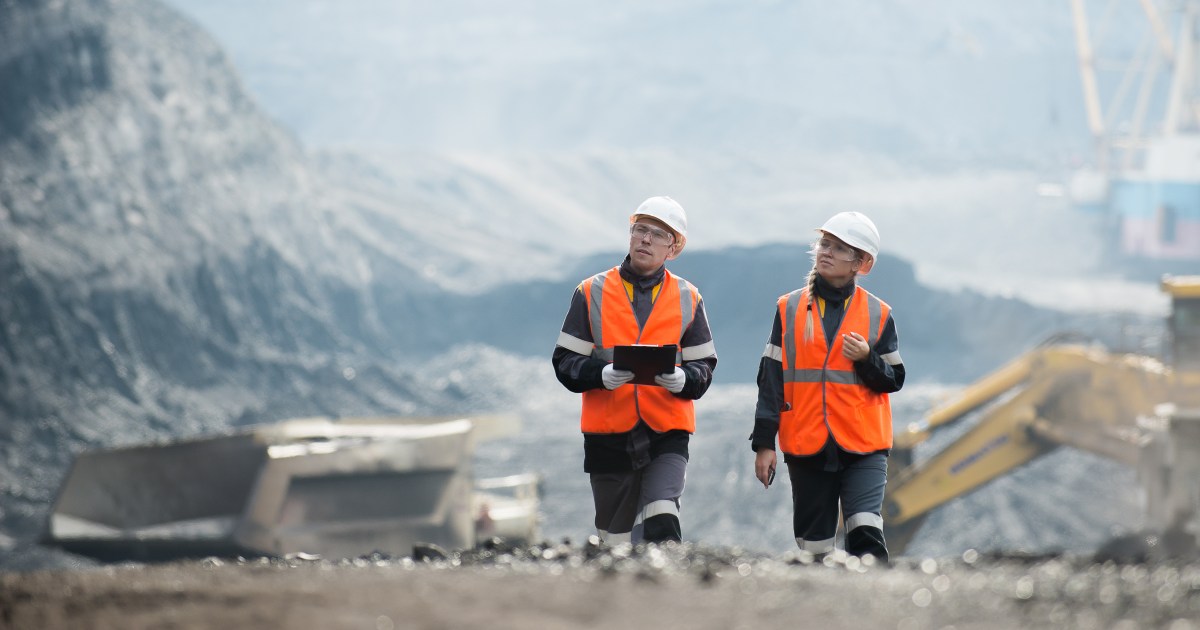Table of Contents
The Inflation Reduction Act (IRA) and Infrastructure Investment and Jobs Act (IIJA) include historic public investments to accelerate the decarbonization of the American economy in ways that deliver economic benefit to communities most impacted by climate change.
As our Brookings Metro colleagues pointed out in a 2021 report, fundamental to this strategy is the recognition that transitioning the U.S. economy away from fossil fuels disrupts those local economies that have historically relied on oil, gas, and coal. To be sure, carbon-specialized communities have struggled with their reliance on fossil fuels well before the world began its major push toward renewables. Nonetheless, any nationwide decarbonization strategy should also include place-based support for these communities to enable a timely, just transition toward new sources of economic competitiveness and prosperity.
But activating regional economic transitions is complex, long-term work that demands significant local capacity and sustained resources. Recognizing the need for additional federal support, programs like the Economic Development Administration’s $1 billion Build Back Better Regional Challenge are investing in carbon-specialized economies to help enable these transitions, including an explicit $100 million carve-out for distressed coal communities.
This post explores the economic imperative of place-based support in regions with legacies of fossil fuel dependence, and how regional coalitions are utilizing federal resources to accelerate their own economic diversification.
The transition away from fossil fuels has hit certain regional economies hard
Over the past few decades, the low cost and high supply of alternative energy sources (such as natural gas and renewables), coupled with declining coal reserves and growing restrictions on sulfur emissions, have reduced the economic attractiveness of energy sourced from coal-fired power plants. Even as natural gas served as an effective replacement for coal, employment in oil extraction has been on a near-permanent downward trajectory since the 2014-16 market collapse, in which global oversaturation led the price of crude oil to plummet below its Great Recession level. As oil and gas companies hemorrhaged jobs over this two-year period, they pivoted to automation as a labor and cost-saving strategy. And while increased demand has led to a rebound in oil’s profitability, these jobs have not come back. Between 2014 and 2021, employment in oil extraction and coal mining decreased by 45%, with losses disproportionately concentrated in carbon-dependent metro areas.
Over the same period, 15 metro areas with populations over 250,000 and a concentration of jobs in mining, quarrying, and oil and gas extraction at least 2.5 times higher than the national average experienced a 48% decline in employment within that sector, while metro areas with lower concentrations lost 30%.1 Despite the ongoing political contention surrounding the use of fossil fuels, the disappearance of jobs in this industry underscores the importance of federal involvement in regional strategies for stanching worker displacement in places heavily impacted by the transition to alternative energy sources.

Indeed, regional economies specializing in fossil fuels confronted significant economic challenges over the past decade, according to our recent Metro Monitor report. In that analysis, we compared regional economic performance between 2011 and 2021 for the nation’s 192 metro areas with populations greater than 250,000. Regions specializing in oil and gas ranked near the bottom for changes in economic prosperity—as measured by changes in productivity, standards of living, and wages—over the last decade. Among 56 metro areas with populations over 1 million, New Orleans ranked 56th, Houston 55th, Oklahoma City 53rd, and Tulsa, Okla. 54th on changes in regional prosperity. Among 79 metro areas with populations between 250,000 and 500,000, Shreveport, La. ranked 79th, Gulfport, Miss. 74th, Beaumont, Texas 58th, and Charleston, W.Va. 68th.
These rankings demonstrate the widespread economic challenges in carbon-specialized metro economies, despite significant prosperity gains in many other regions. Over the past decade, wages in metro areas with a high concentration of jobs in the mining, quarrying, and oil and gas extraction sector grew at one-third of the national average rate. And while national averages for regional productivity (output per job) and standards of living (output per person) grew significantly over that period, carbon-specialized regions posted declines for both indicators. To be sure, fossil fuel economies were not the only ones lagging the national averages, but regions strongly tied to legacy, carbon-intensive energy sources have been falling behind significantly according to multiple indicators of economic vitality and opportunity.

Place-based federal investments are one key to supporting regional economic transitions away from fossil fuels
The above trends suggest that the nation’s energy transition is already underway, which is causing disruptions in carbon-specialized regional economies. Yet fossil fuels still support livelihoods in these communities, and the nation’s transition will be hindered if there are no new sources of jobs to replace those in oil, gas, and coal. Developing competitive, dynamic clusters in these regions is, in turn, at the heart of that imperative and the challenges that come with it.
However, even when new economic development opportunities are easily identifiable, historical examples suggest scaling successful cluster strategies can take substantial time and resources—not to mention significant coordination across sectors and sources of investment, along with learning and adaptation as the larger global economy changes.
For example, in the Austin, Texas region, where the high-tech sector is one of the nation’s most famous examples of successful cluster development, strategic planning dates back to the mid-20th century, when economic development practitioners started working to attract technology firms to the region as a way of diversifying its economy beyond oil extraction. Intensive public investment, especially in research and development, was a critical catalyst for the region’s long-term transition. Even as recently as 2015— decades after the cluster’s initial incubation—53% (or $346 million) of the University of Texas at Austin’s research and development was funded by a handful of federal agencies, including the Department of Defense, Department of Energy, Department of Health and Human Services, and the National Science Foundation. The state of Texas has also played a significant role, providing funding to build a research-to-commercialization pipeline and collaborating with industry across the region.
It is impractical to suggest that other metro areas hoping to diversify away from fossil fuels should simply copy Austin’s approach. Many of Austin’s successes are derived from its ability to leverage existing geographic assets and university networks to attract private business (including IBM, Texas Instruments, and SEMATECH). However, while IBM will not build a headquarters in every city trying to create a tech cluster, the success factors that enabled the transition in Austin and elsewhere are replicable—if the federal government is willing to be a co-investor at the scale and duration needed.
This is one of the central mandates of the Build Back Better Regional Challenge (BBBRC), the marquee program of the Economic Development Administration’s (EDA) American Rescue Plan Act-funded portfolio. The BBBRC seeks to strengthen regional industry clusters across the U.S. while creating resilient, high-paying jobs and bolstering global competitiveness. And through it, carbon-specialized communities are making substantive, transformational investments in high-potential clusters. Unlike narrower federal funding programs (such as the ones leveraged by UT Austin), the BBBRC offers a unique opportunity for these communities to fund multipronged cluster strategies in one fell swoop, rather than seeking out a patchwork of funding sources to pay for a series of interconnected investments.
The potential of this uncommon approach is evident in places like Tulsa, where the coalition-driven Tulsa Regional Advanced Mobility (TRAM) Corridor initiative will use nearly $39 million in BBBRC funding to diversify the regional economy away from carbon-based energy and redirect assets toward the rapidly growing “advanced mobility” sector, which focuses on automation and unmanned aerial systems. While the Tulsa metro area has a long history of private aerospace manufacturing, the TRAM coalition’s BBBRC grant will enable and encourage the region to leverage those private assets alongside its existing network of universities, an ecosystem of community colleges, and over $32 million in commitments from philanthropy and industry partners to scale and modernize Tulsa’s mobility infrastructure. The intention is to equip the region to upskill its unemployed and underemployed workforce, including those displaced by the decline of fossil fuels, into higher-paying jobs with comparatively low barriers to entry, and that are also less susceptible to automation.
With the Tulsa Community Foundation as one of the coalition’s co-recipients,2 TRAM aims to ensure that these high-paying job opportunities are accessible to historically excluded communities through the implementation of a pre-apprenticeship bridge program (to reduce barriers for students without the technical skills required for other credentialling programs) and by providing what the coalition says will be “robust wraparound services” to all participants in its workforce upskilling projects. While existing assets in the region—including the Tulsa Port of Catoosa, Tulsa Port of Inola, Tulsa International Airport, and Skyway36—uniquely position the region to become a national leader in the advanced mobility sector, TRAM plans to use BBBRC funding as a major accelerant to drive development that members of the coalition say would otherwise take “decades to realize.”
Similarly, in southern Louisiana, the H2theFuture coalition plans to use $50 million in BBBRC funding to build advantages in an industry the region is uniquely positioned to help lead: the production of zero-carbon hydrogen, a unique and promising energy source for industrial processing and other applications. This case spotlights how it should be possible for some regions to repurpose a significant capital stock—namely, the physical infrastructure created by the oil and gas industry—and not just repurpose and combine institutional assets in productive and inclusive ways.
Given that Louisiana lost more jobs in oil and gas extraction than any other state between 2001 and 2020, the H2theFuture coalition is strategizing to use federal dollars to leverage the region’s dense hydrogen pipeline system and sizeable port complex to become the nation’s top producer and consumer of green hydrogen. Through a series of business ecosystem, talent pipeline, and R&D investments, H2theFuture plans to establish southern Louisiana as a top location for green hydrogen-related companies, make the production of green hydrogen cost-competitive for commercial application, and advance economic equity for historically excluded communities and displaced workers across the region’s industrial corridor.
This strategy embeds community-based organizations, historically Black colleges and universities (HBCUs), and community colleges across its full project portfolio to create a multipronged workforce development approach. It intentionally centers “demand-driven” training and upskilling programs designed to help historically disinvested Black communities, displaced oil and gas workers, and rural communities disproportionately impacted by carbon-intensive industry activity “thrive in a decarbonized economy.” And, given that the region’s infrastructure assets would be extraordinarily time-consuming and expensive to replicate elsewhere, southern Louisiana is one of the only places capable of developing the domestic green hydrogen economy at the necessary speed and scale. The H2theFuture coalition estimates that by 2050, green hydrogen will account for over 70% of total hydrogen demand—an increase of over 500%.
In Oklahoma City, the Oklahoma Biotech Innovation Cluster (OBIC) is capitalizing on successful efforts by the University of Oklahoma (OU) and Oklahoma State University (OSU) to strengthen the region’s biosciences industry as a core component of its broader strategy to reduce reliance on oil and gas production. Using OSU and OU’s capital assets and resources, OBIC seeks to anchor the biotechnology supply chain to Oklahoma City, attracting developers and other private employers to the region and broadening access to high-wage career pathways for displaced oil workers and other historically excluded communities. Through this university-industry linkage, OBIC hopes to close the “Valley of Death” that currently exists in the region’s biosciences innovation ecosystem, in which a surplus of academic research is spurring tremendous amounts of innovation, but there is not enough of an industry presence to translate this innovation into commercial activity. By closing this gap, OBIC intends to not only grow and diversify the region’s higher education and biosciences startup landscape, but also leverage its relationships with Work Ready Oklahoma and Chickasaw Nation Work Study to “cultivate deliberate workforce development pathways” for “middle-skill, living-wage employment” in some of the city’s most poverty-persistent neighborhoods.
Successful economic transitions require both local solutions and federal investment
The reality is that place-based investments are just one aspect of a broader, affirmative vision for infrastructure and energy generation in the United States. But as the economy continues to decarbonize, we are likely to see a rise in resiliency-oriented industry transition strategies across carbon-specialized communities. To take just one example, regions with long legacies of fossil fuel production have developed applications for the Department of Energy’s $8 billion Regional Clean Hydrogen Hubs (H2Hubs) program, which will attempt to “form the foundation of a national clean hydrogen network that will contribute substantially to decarbonizing multiple sectors of the economy.” Already, two coalitions based in Houston have developed applications, and the Department of Energy has encouraged a three-state coalition formed by Arkansas, Louisiana, and Oklahoma to submit their hub proposal for further federal consideration.
There are several initial takeaways from the BBBRC-supported strategies. First, no magical thinking: Regions seeking to make this type of transition (like any other type) must first identify the market opportunities they are best positioned to exploit. This may require repurposing existing economic strengths (such as New Orleans’ conversion of existing hydrogen infrastructure), or investing in scalable sources of economic growth and jobs (such as Oklahoma City’s biotechnology cluster and Tulsa’s advanced mobility industry).
Second, there needs to be a critical mass of public investment. Large-scale regional transition strategies will typically need to be catalyzed by public investment—which, in this case, is justified by the need to decarbonize the economy without displacing the workers who rely on it.
Third, credible, promising, and just industry transitions acknowledge that greater inclusion can help enhance regional productivity, prosperity, and cohesion. For these three coalitions, inclusive growth is the core outcome—demanding a strategy in which investments in historically excluded people and communities is critical to scaling and strengthening regional innovation, entrepreneurship, and human capital ecosystems. These equity-driven strategies offer a strategic blueprint for future place-based economic approaches to supporting the energy transition.
And fourth is the importance of multisector delivery. No single institution typically has the knowledge and capacity to execute transformative regional economy strategies on its own. Rather, these strategies require networks of institutions—universities, regional economic development groups, community-based organizations, local governments, state governments, and philanthropies—working seamlessly across a unified vision.
The development of the clean energy transition strategies highlighted here make it clear that if the federal government, states, industry, and other co-investors are prepared to invest in place-based economic development, communities are ready and willing to meet the moment. While it is too early to assess whether these cluster strategies are beginning to reverse the negative economic trends that have become so clear over the past decade, this unprecedented level of federal commitment—combined with an uncommon, targeted investment approach—has at last begun this urgent process.
This report was prepared by Brookings Metro using federal funds under award ED22HDQ3070081 from the Economic Development Administration, U.S. Department of Commerce. The statements, findings, conclusions, and recommendations are those of the author(s) and do not necessarily reflect the views of the Economic Development Administration or the U.S. Department of Commerce.


/cloudfront-us-east-2.images.arcpublishing.com/reuters/4KQGYICZ3JPZTNNKFVZ36FWTZI.jpg)


:max_bytes(150000):strip_icc()/risk_management-5bfc36abc9e77c005182400f.jpg)

More Stories
York County tends to make a $45 million financial commitment to address opioid epidemic
Axis Genuine Estate Expense Have faith in (KLSE:AXREIT) is favoured by institutional house owners who maintain 52% of the firm
Bonds Have Been Terrible Investments. It’s a Excellent Time to Obtain.